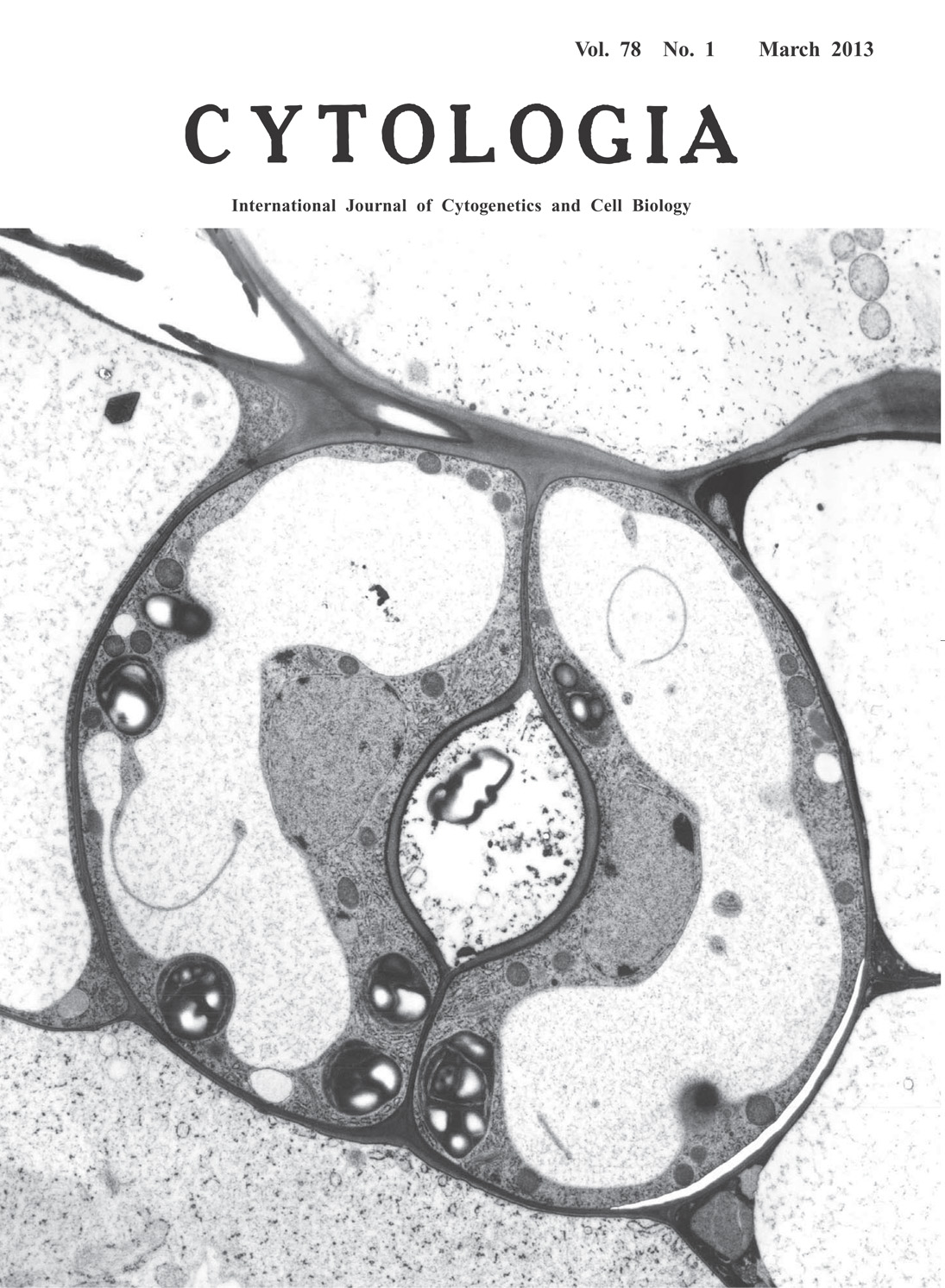| ON THE COVER |  |
|---|---|
| Vol. 78 No.1 March 2013 | |
| Technical note | |
|
|
|
| An Electron Micrograph of Guard Cells Cryofixed by Metal-Contact Type Rapid-Freezing
Method Metal-contact type rapid freezing method using liquid helium is theoretically the best method for preservation of the fine ultrastructure of subcellular organelle (Hisada et al. 2001). HIF4K is an automated metal-contact type cryoxation device had been developed by Prof. Furuya group at Hitachi Advanced Research Laboratory at around late ‘90s. Although the region with the highest quality is only within ~10 μm from metal-contact plane (~200 μm with high pressure freezer), preservation of the subcellular structure is excellent. Even vacuole, which is dynamic, watery, and fragile organelle, is well preserved. HIF4K is not commercially available, so it is quite pity that we cannot use this device at present. Brief description of experimental procedure is described as below. Seeds of Arabidopsis thaliana (Col) were sterilized and sown on MS medium, vernalized in the dark at 4 at 4°C for 3-4 days, and then grown at 23°C under continuous light. Cotyledon of TG2-1 (γ-TIP-GFP expressing line) were rapidly frozen by slamming onto the copper block cooled by liquid helium, using automated device, HIF4K. Frozen samples were then transferred to 4% OsO 4 in anhydrous acetone and kept at -80°C for 4 days. Samples were held at -20°C for 2 h, 4°C for 2 h, then at room temperature for 10 min, and after a wash with anhydrous acetone. Then samples were embedded in Spurr’s resin. Ultrathin sections were cut, stained and observed under a transmission electron microscope (JEM2000, JEOL, Tokyo). (Chieko Saito, Graduate School of Biological Sciences, The University of Tokyo, Faculty of Science Bldg.2, 7-3-1 Hongo, Bunkyo-ku, Tokyo 113-0033, Japan) |
|